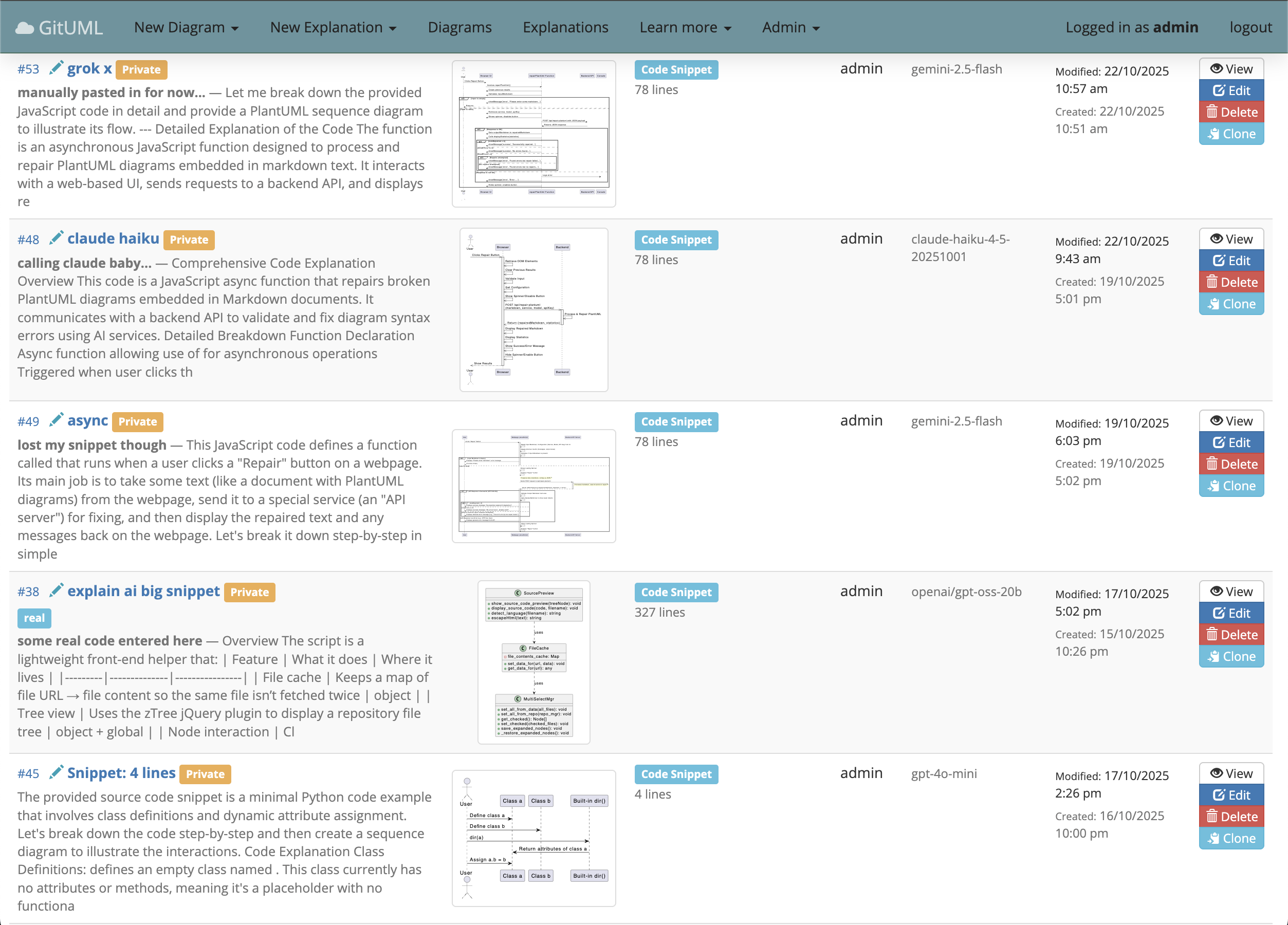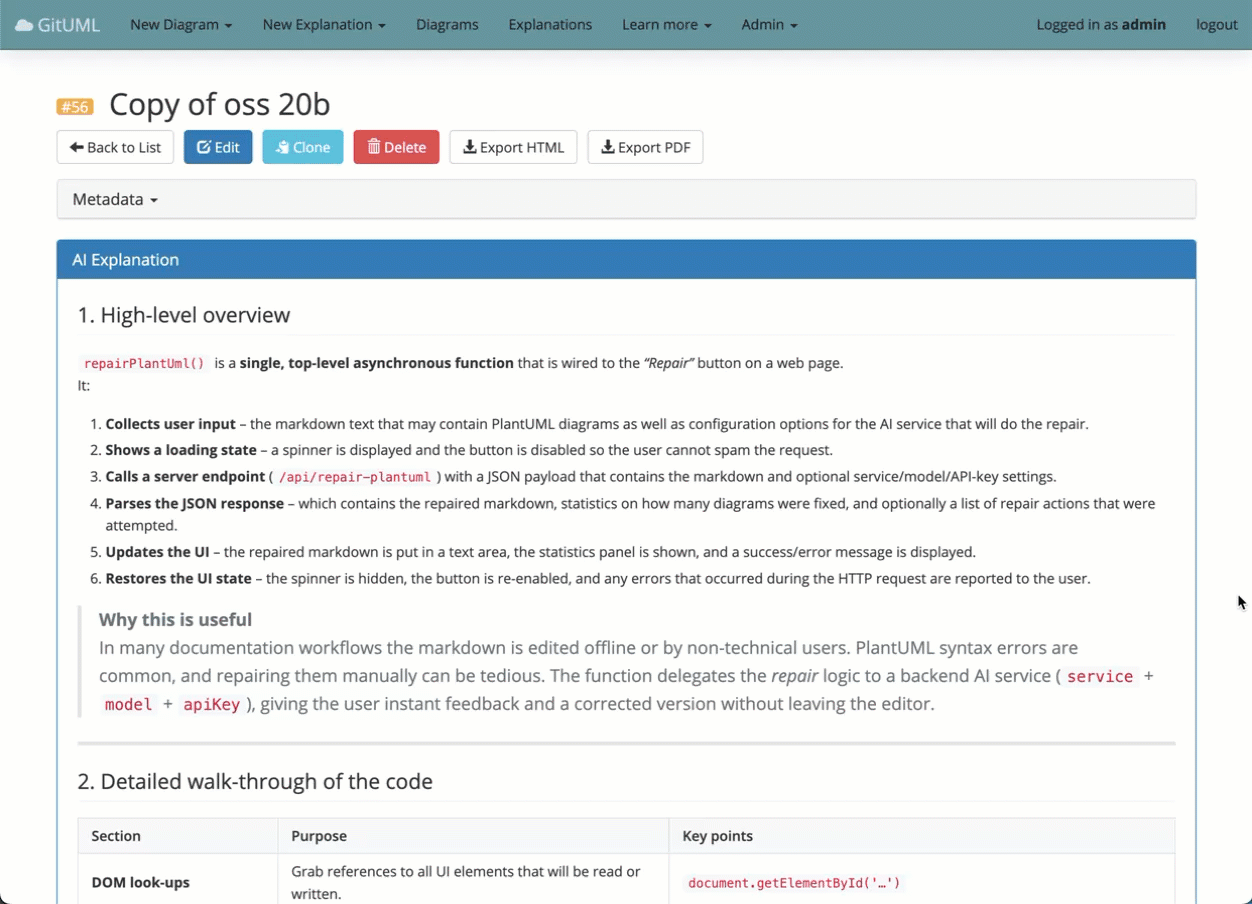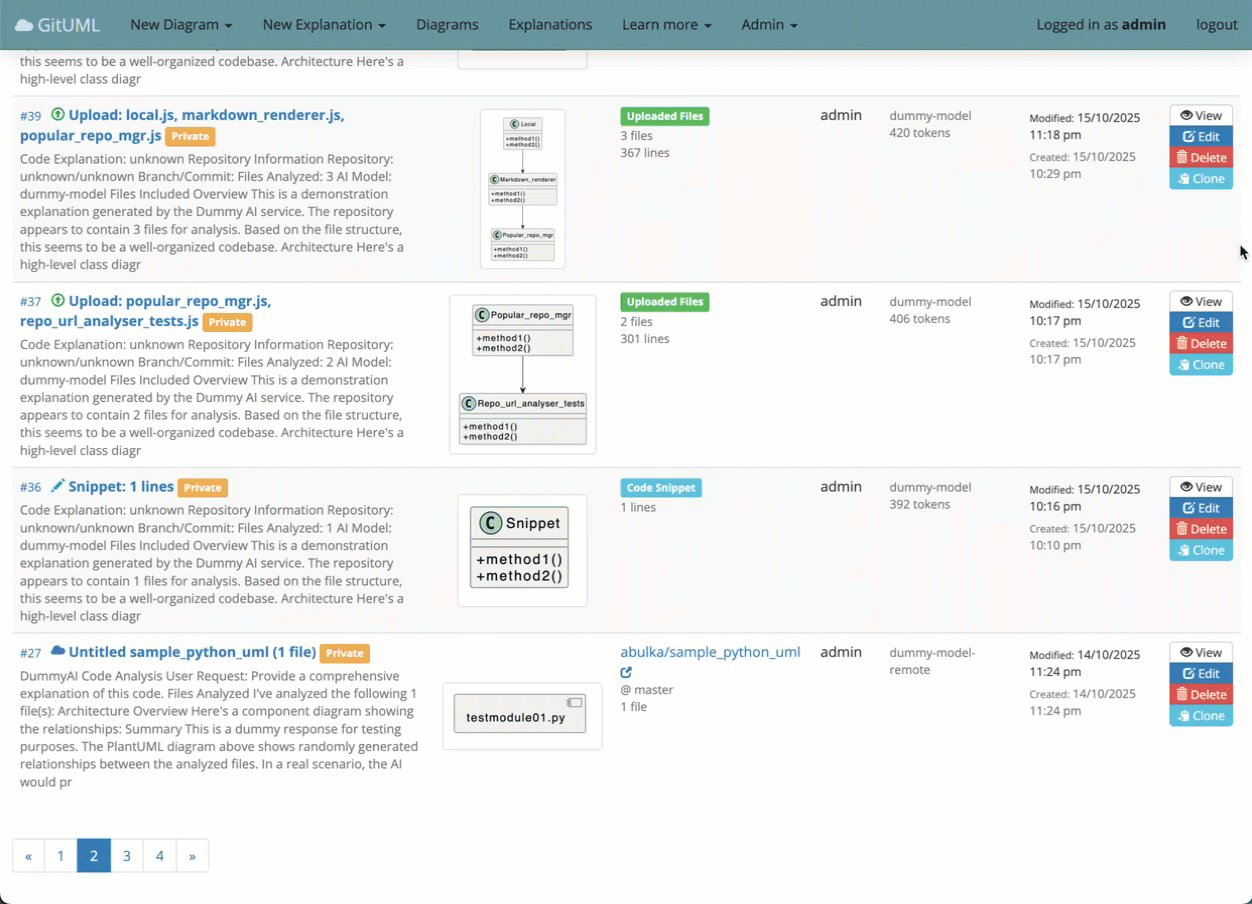Understand code quickly
Rapidly generate diagrams from programming source code.
- Diagrams from git repositories - automatic diagram updates when you push!
- Upload source code files
- Live UML Fiddle converts source code into UML as you type
- Generate the more powerful Literate Code Map diagrams











